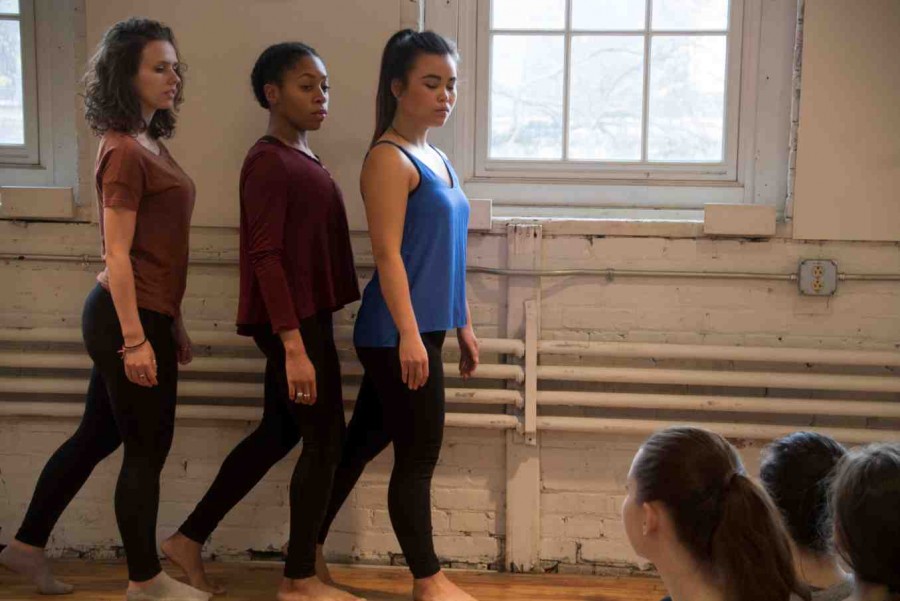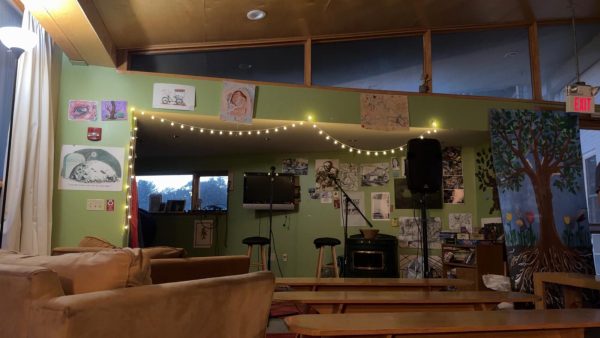Weiss Prize Recipients Inspired by “Differing Perspectives”
Dancers rehearse choreography for the final Weiss Prize performance entitled “Mouthpiece.”
This year’s Weiss Prize performance was held in Mathers Theatre on April 8 with a performance-art installation taking place the following afternoon in the Goodyear Gallery.
Rachael Smith ’16, music composition major, and Anastasia Putri ’16, anthropology and dance double major, were awarded the Emil R. and Tamar Weiss Prize in Creative Arts last year and have been preparing for these performances since.
“We started the process with our proposal in January 2015, and started working on the actual piece in late February 2015,” said Smith.
The collaborative process began with a conversation that provided the two with the basis for their work, summarized in an interview held shortly after being awarded the prize as “differing perspectives.”
“We came up with the idea to write about varying perceptions of reality when we had difficulty getting on the same page about the project. The idea for the music comes from my interest in the musicality of human speech,” Smith said.
Smith and Putri took this idea further and recorded an hour-long conversation, which became the material for Smith’s electronic music in addition to the inspiration for the performed aspects of the pieces.
Substantial time spent rehearsing has been essential to bringing all of these musical and visual elements together for the recent performances.
“The musicians have had weekly practices that lasted between two-three hours since early February, and we all had practice every day for multiple hours the week leading up to the performance,” said Smith. “We also got together a few times in the fall with musicians and dancers.”
The April 8 performance, entitled “Mouthpiece” used the “recorded conversation to explore the ways shared reality is perceived,” according to the Dickinson College website.
The performance began with Putri alone onstage, accompanied by excerpts of the recorded conversation. As the piece progressed, the recording was altered, introducing the electronic portion of the music.
The sounds alternated between this electronic reconfiguration of the recording and live music performed by the seven-person ensemble. A group comprised of six dancers entered and exited the stage in different combinations and patterns, visually representing this concept of varying perceptions. Putri, the seventh dancer, opened and closed the performance unaccompanied by the other dancers.
The conclusion of the performance was greeted with a standing ovation by the audience, which filled Mathers nearly to capacity, and a question and answer session offered by the prize recipients and performers.
According to the Dickinson College website, the Emil R. and Tamar Weiss Prize in the Creative Arts, established in 1986, is awarded annually to students majoring in English (creative-writing emphasis), theatre and dance, art and art history or music.





